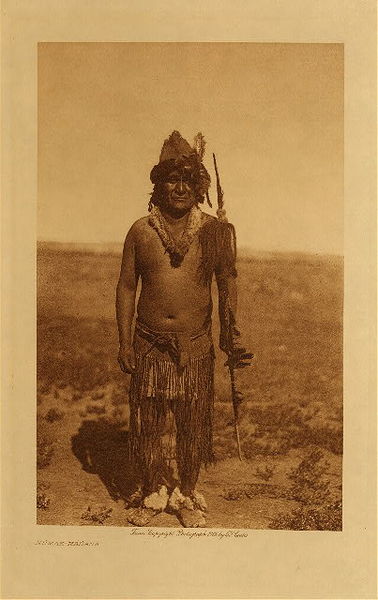Edward S. Curtis (1868-1952)
View Artist Biography
Title:
*50% OFF OPPORTUNITY* Numak-Mahana
Date:
1908
Size:
Volume, 12.5 x 9.5 inches
Medium:
Vintage Photogravure
In ancient times when Numak-mahana, the creator, was still dwelling among the Mandan, the people had a wonderful boat, which moved itself. It was called Idehe, "He Goes." The people would embark in it, and say, "Idehe, go!" and the boat would glide away across a certain body of water to the home of another people, where the Mandan obtained a kind of large shell called "the shell that has a noise." These strangers would feast until many of the visitors died. Numak-mahana, dissapproving of this, accompanied them on one of their voyages, disguising themselves, and running the long hollow stem of a water-lily through his body. Thus he was able to swallow all the food that was brought, and still call for more when the supply had been exhausted, for it passed through without lodging in his stomach. His hosts recognized him as a mahopini, and for the time abandoned the effort to kill their visitors. With seeming friendliness they promised to come to the Mandan the next year. Having returned home in safety, Numak-mahana at once planted a cedar post in the ground and painted it red. This, he said, would represent him to the people after his departure. Cedar was chosen because it is chief of all woods, outlasting all others. Around the post in a circle he erected wooden slabs, held together by two hoops of cottonwood saplings, one inside and one outside. "This," said he, "is minimi tahhe, and it shall be a breastwork for your protection. When the people from across the water come against you, they may kill some, but never all so long as this stands." In the following year their enemies came against them as expected, and caused great flood, but the hoops around minimi tahhe prevented the water from rising above them.
